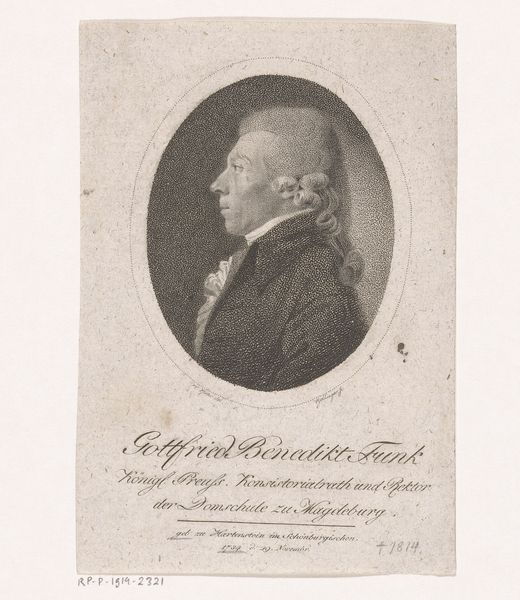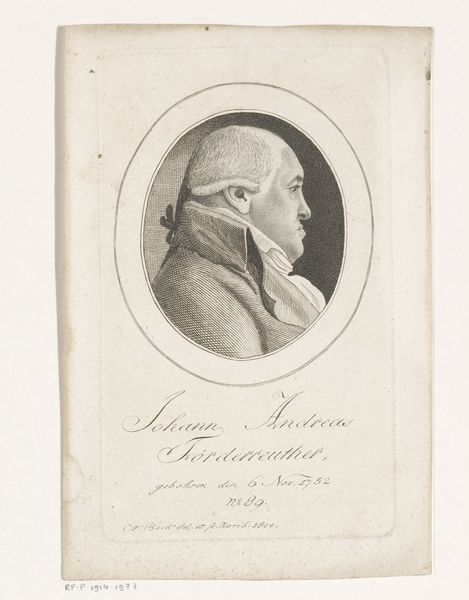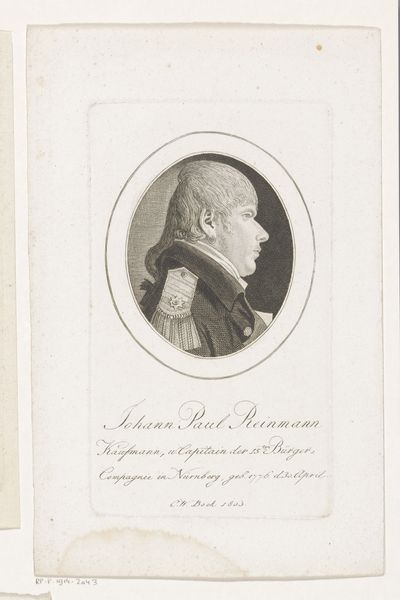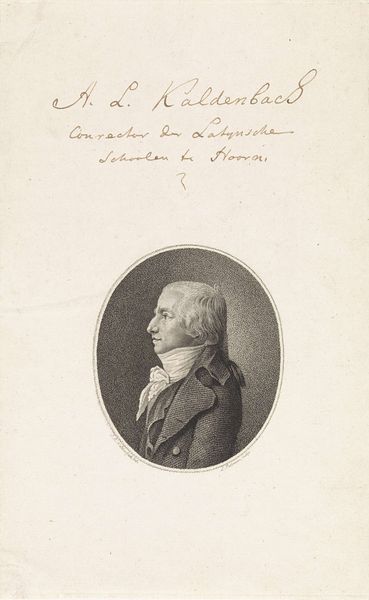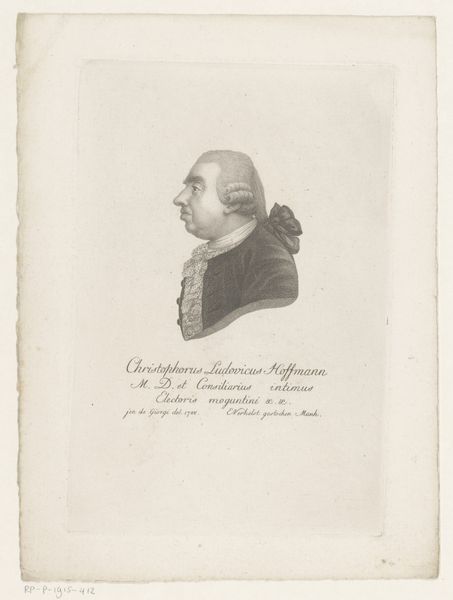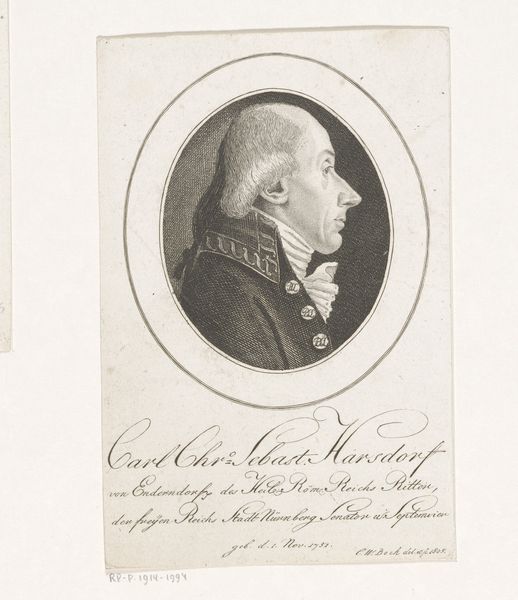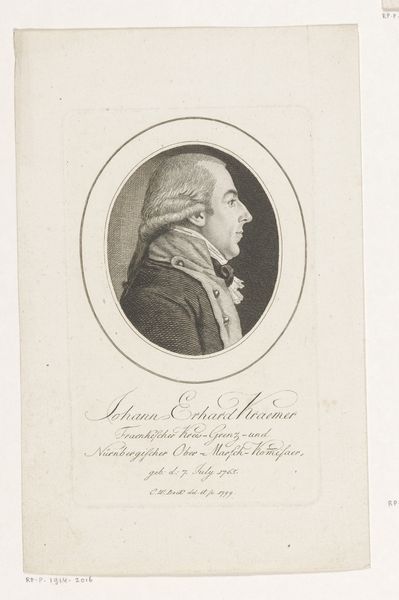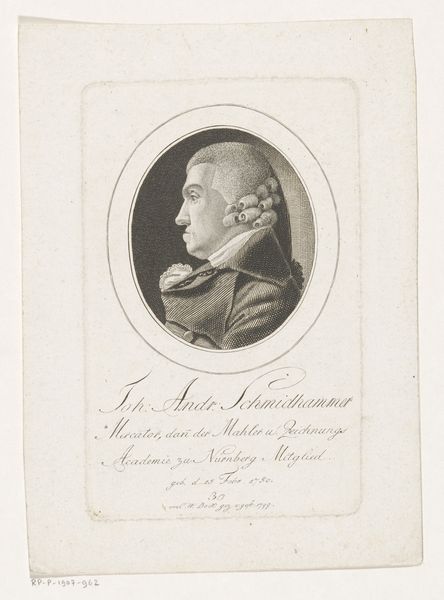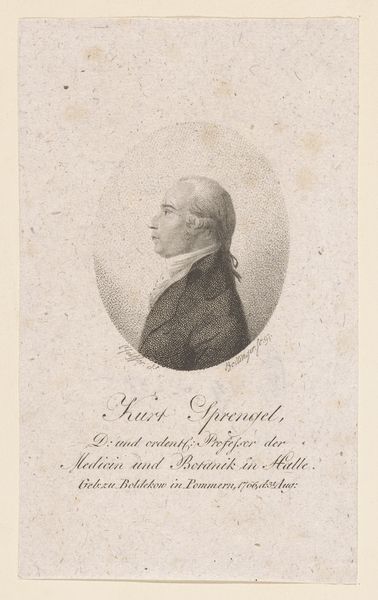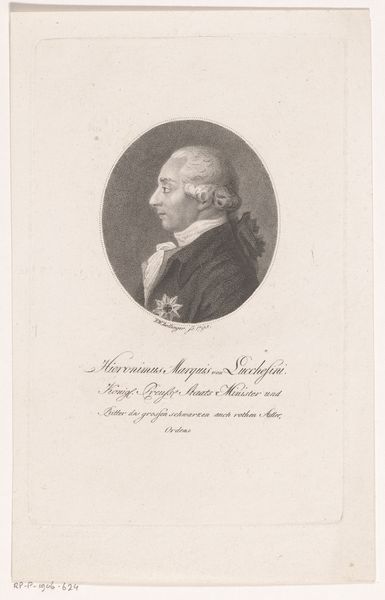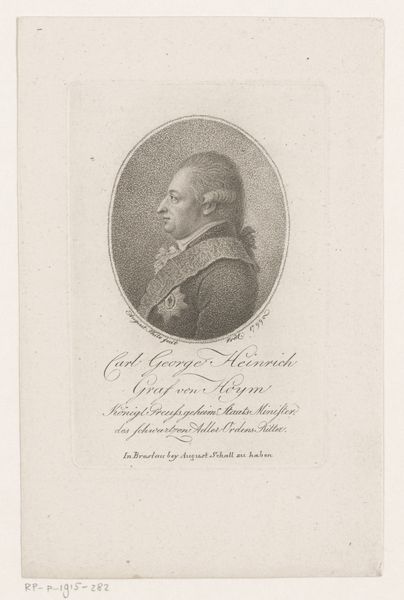
Portret van Joseph Heinrich, Graf von Schlick zu Bassano und Weißkirchen 1793
0:00
0:00
christophwilhelmbock
Rijksmuseum
paper, engraving
#
portrait
#
pencil drawn
#
neoclacissism
#
paper
#
history-painting
#
engraving
Dimensions: height 148 mm, width 94 mm
Copyright: Rijks Museum: Open Domain
Editor: This is Christoph-Wilhelm Bock’s 1793 engraving, "Portret van Joseph Heinrich, Graf von Schlick zu Bassano und Weißkirchen," made on paper. It's a very formal portrait, and the details in the engraving are incredibly fine. What historical context can we apply to this particular work? Curator: Given Bock’s meticulous rendering of Joseph Heinrich, think about the function of portraiture at the time. This engraving was created in the midst of the Enlightenment, with Neoclassicism gaining traction across Europe. What underlying message could Bock have been trying to send? Who was this portrait made for, and what power did that imply in the late 18th century? Editor: Maybe it was meant to project an image of power and stability during a time of upheaval, with the French Revolution happening just across the border. I’m also struck by the subject's serious expression. Curator: Exactly! Think about how Neoclassical art often invoked ideas of republicanism, rationality, and order. In many ways, those attributes stood in contrast to the more ornamental and whimsical qualities of the preceding Rococo era and it certainly marked a departure in artistic representation from previous portraits of nobility. How might this portrait, with its very controlled, almost austere aesthetic, be seen as a rejection of old regimes in favor of reason and reform? And consider the identity of the sitter, and how powerful officials would like to be seen during political and cultural transitions. Editor: So it's less about the individual, and more about a statement regarding larger societal ideals and transitions of power? Curator: Precisely. By looking closely at artistic choices, we reveal so much about societal anxieties and the evolving face of power during the Enlightenment. Editor: It makes me reconsider what I see, understanding this image as more than just a portrait; it’s a visual representation of societal shifts. Curator: And remember, even seemingly straightforward images are imbued with complexities we can unpack. Every image contains its own encoded politics, power relations, and historical agency.
Comments
No comments
Be the first to comment and join the conversation on the ultimate creative platform.
